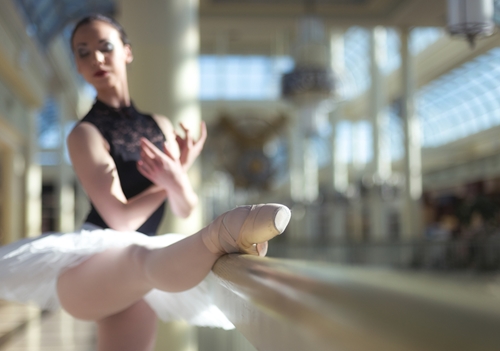What skills set a dancer apart from the pack? Most studio owners and dance teachers might say technique, dedication, passion or stage presence. While these are all essential for pre-professional dancers, the best students also have a certain “je ne sais quoi” when it comes to music. This intangible quality is often referred to as musicality, and it is essential for dancers who want to take their performances to the next level. Here’s what instructors need to know about musicality in dance and how they can help dancers connect with the music.
Musicality Defined
If you ask professional dancers and choreographers to define musicality, you’d probably get a host of different answers. Some people might explain it simply as an understanding of music. Others may say that it’s letting the music guide your movements. Industry professionals know musicality when they see it, but still might have trouble putting the characteristic into words.
“Musicality is understanding music on a technical level and then dropping all of that knowledge so you can sit deep inside the music,” Wade Robson, choreographer and “So You Think You Can Dance” regular, explained to Dance Spirit magazine. “It’s dancing inside the music, as opposed to floating on top of it.”
Because musicality is a rather vague, intangible concept, there’s not one strict definition of this quality. However, most everyone agrees that musicality in dance sets professional dancers apart from amateurs. The question then becomes whether this innate understanding of music can be taught or if dancers just have to have it.
Introducing the Concept
As your dancers progress to more advanced classes, you’ll want to introduce them to the concept of musicality. Some students may already be able to connect with the music and they will likely understand the quality without too much explanation. However, dancers who are less musically inclined may have trouble melding the steps with the corresponding notes. Dance Spirit magazine explained that nonmusical dancers often show too much effort in their performances, but there are ways you can help them connect with the soundtrack.
Start teaching your students about musicality in dance by honing their ears. Individuals who have played instruments often catch on quicker than others, but the skill can be taught with dedication and practice. Have your dancers close their eyes and listen to the music. Ask them to think about the meaning of the song – even if it’s instrumental. Work together to plot out the different mood, tempo and phrase changes. It may also help to let them free dance to the piece so their bodies are guided by the music.
Honing Musical Intuition
Chances are that musicality won’t be perfected in one session. If your dancers are serious about furthering their skills, they’ll need to continue working on their musical intuition. You can help them practice by switching up your lessons once in a while and throwing them musical curve balls. Dance magazine suggested bringing in a live pianist for class or using different variations of the same song – orchestra arrangements, lyrical and instrumental versions all have slight differences that musically adept students will respond to.
“Orchestral music allows you to hear all the different colors of the instruments,” Finis Jhung, a ballet teacher in New York, told Dance magazine. “It gives you something to play with as an artist – it gives you more to hear.”
Given time, dedicated students will learn to apply musicality to their performances for a little extra pizzazz. Don’t let your dancers get discouraged if they struggle with the concept, as it’s hard to teach and even harder to learn.


